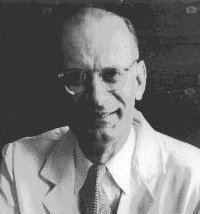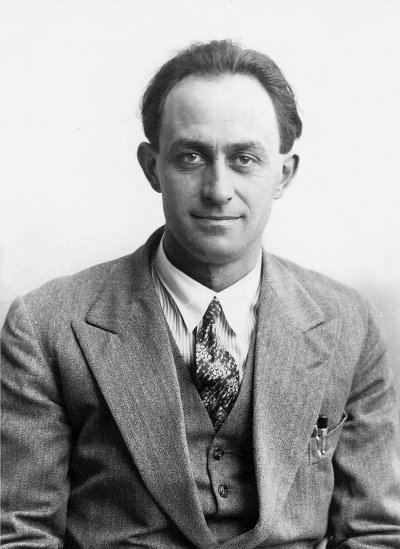Name Franco Rasetti Role Physics researcher | ||
Born August 10, 1901Castiglione del Lago, Italy ( 1901-08-10 ) Books Elements of Nuclear Physics Awards Guggenheim Fellowship for Natural Sciences, US & Canada, Charles Doolittle Walcott Medal | ||
Franco Dino Rasetti (August 10, 1901 – December 5, 2001) was an Italian scientist. Together with Enrico Fermi, he discovered key processes leading to nuclear fission. Rasetti refused to work on the Manhattan Project, however, on moral grounds.
Contents

Rasetti was born in Castiglione del Lago, Italy. He earned a Laurea in physics at the University of Pisa in 1923, and Fermi invited him to join his research group at the University of Rome.

In 1928-1929 during a stay at the California Institute of Technology (Caltech), he carried out experiments on the Raman effect. He measured a spectrum of dinitrogen in 1929 which provided the first experimental evidence that the atomic nucleus is not composed of protons and electrons, as was incorrectly believed at the time.
In 1930, he was appointed to the chair in spectroscopy at the Physics Institute of the University of Rome, at that time still located in Via Panisperna. His colleagues included Oscar D'Agostino, Emilio Segrè, Edoardo Amaldi, Ettore Majorana and Enrico Fermi, as well as the institute's director Orso Mario Corbino. Rasetti remained in this post until 1938.
Rasetti was one of Fermi's main colloaborators in the study of neutrons and neutron-induced radioactivity. In 1934, he participated in the discovery of the artificial radioactivity of fluorine and aluminium which would be critical in the development of the atomic bomb.
In 1939 the advance of fascism and the deteriorating Italian political situation led him to leave Italy, following the example of his colleagues Fermi, Segré and Bruno Pontecorvo. With Fermi he had discovered the key to nuclear fission, but contrary to many of his colleagues, he refused for moral reasons to work on the Manhattan project.
From 1939 to 1947, he taught at Laval University in Quebec City (Canada), where he was founding chairman of the physics department.
In 1947, he moved to the United States where he became a naturalized citizen in 1952. Until 1967, he held a chair in physics at Johns Hopkins University in Baltimore.
After 1960, he was more and more interested in natural sciences. He became an expert on trilobite fossils and on wildflowers in the Alps. He died in Waremme, Belgium at the age of 100. The Nature obituary noted that Rasetti was one of the most prolific generalists whose work and writing are noted for the elegance, simplicity and beauty.
Raman spectroscopy and the model of the atomic nucleus
After the discovery of Raman scattering by organic liquids, Rasetti decided to study the same phenomenon in gases at high pressure during his stay at Caltech in 1928-29. The spectra showed vibrational transitions with rotational fine structure. In the homonuclear diatomic molecules H2, N2 and O2, Rasetti found an alternation of strong and weak lines. This alternation was explained by Gerhard Herzberg and Walter Heitler as a consequence of nuclear spin isomerism.
For dihydrogen, each nucleus is a proton of spin 1/2, so that it can be shown using quantum mechanics and the Pauli exclusion principle that the odd rotational levels are more populated than the even levels. The transitions originating from odd levels are therefore more intense as observed by Rasetti. In dinitrogen, however, Rasetti observed that the lines originating from even levels are more intense. This implies by a similar analysis that the nuclear spin of nitrogen is an integer.
This result was difficult to understand at the time, however, because the neutron had not yet been discovered, and it was thought that the 14N nucleus contains 14 protons and 7 electrons, or an odd number of (21) particles in total which would correspond to a half-integral spin. The Raman spectrum observed by Rasetti provided the first experimental evidence that this proton-electron model of the nucleus is inadequate, because the predicted half-integral spin has as a consequence that transitions from odd rotational levels would be more intense than those from even levels, due to nuclear spin isomerism as shown by Herzberg and Heitler for dihydrogen. After the discovery of the neutron in 1932, Werner Heisenberg proposed that the nucleus contains protons and neutrons, and the 14N nucleus contains 7 protons and 7 neutrons. The even total number (14) of particles corresponds to an integral spin in agreement with Rasetti's spectrum.
